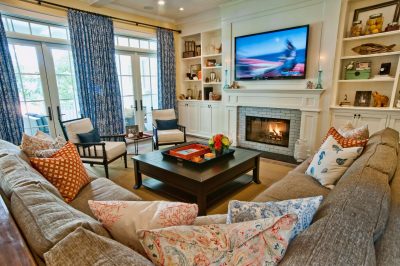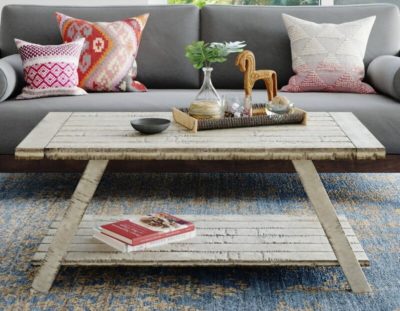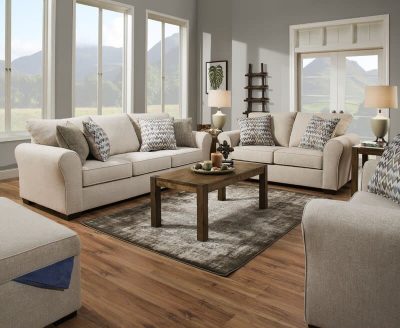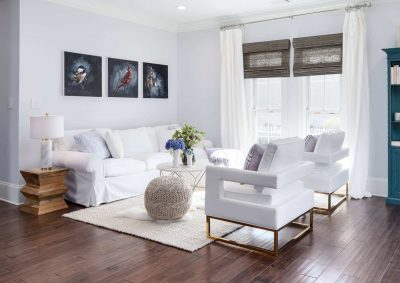The average size of a living room is three hundred and forty square feet (340 sqft). The average dimensions of a living room are 16 x 20 feet. A living room usually takes up about 15% of the space in a small home, but only 8% percent of the space in a large home.
Most people want a big home. But with big homes come big rooms that must be furnished. One big room that is the priority when it comes to furnishing is the living room. Knowing how much furniture to buy is important both to the aesthetics of the room and your budget.
The variable in living room sizes depends on the size of the home. Below, we examine the different size homes and how their size effects the living room’s square footage. You also need to remember that a living room and a family room are considered two separate rooms.
Does Size Really Matter When It Comes to Homes?
The size of your living room correlates to the size of your house. In a home that is between 2000 and 2,900 square feet, the living room will average 319 square feet. If you have a 3,000 plus square foot house, you can expect a 393 square foot living room. Because houses have been increasing in size, obviously living rooms have as well.
Since 1973 the average house in the U.S. has increased a thousand feet in square footage. In 1973 the average house was 1,525 square feet and now it’s 2,687 in square feet…that’s a 62 percent increase.
Living Rooms Come in Different Floor plans and Furniture Arrangements.
There are different shaped living rooms. Some of them have challenges when it comes to arranging furniture. The different shapes include:
- “L” shaped
- Square
- Rectangular (long)
- Open
With an “L” shaped living room you need to treat it like two rooms. You can make a cozy sitting area in the smaller part (Read also: 32 Top Cozy Living Room Ideas to Snuggle Up With). This will break the large room up and provide you with a cozy, private area. Some people use this area as an office.
It’s simpler to arrange furniture in a square living room. It especially works if you don’t have a lot of doors in it. You can place your furniture around the room without a hindrance.
The rectangular living room is a challenge and it depends on how wide it is as to how you arrange it.
If it’s wide enough, start with dividing the room in two parts. Place your furniture to create the semblance of two rooms. If you place your couch in the middle of the room facing the short side of the wall, you can use a sofa table to help in dividing the room into two halves. Because you don’t have a lot of walls, an open living room is relatively easy to decorate. It allows you flexibility with your arrangements.
How to Create a Balanced Living Room.
You may be restricted by your floor plan on how you arrange your furniture, but you can still have a balanced living room. A balanced living room depends on how you approach decorating. Let’s back up a moment. When you’re arranging your furniture, in any room, don’t shove it up against the wall. You’re not throwing a dance with a dance floor; you’re trying to create a comfortable and lovely sitting area.
If you must put a sofa or chair against the wall, make sure you pull it out so it’s not touching it. Your furniture should be at least 36 inches away from the wall.
When you go shopping don’t buy anything, at first, except for these three items:
- Sofa
- Area rug
- Paint
These three elements set the tone for the whole room. You could say, they dominate the room. Everything else you do is built around them. Swallow hard and buy the highest quality sofa you can afford. It should last you at least 25 years. A cheaper sofa will last about 10. Splurge on your area rug too. These two pieces can make or break your room. Once you have settled on these pieces, you can start accenting them with chairs, pillows, art, etc.
What is the Difference Between a Living Room and a Family Room?
A living room and family room have two different functions and locations. The living room is located at the front of the house. It’s usually the first room you see. It’s used for entertaining guests on formal occasions.
The family room’s roots started in the 1950s when it was the basement rec room. In the 1970s the family room, as we know it today, started to gain in popularity. It’s much more casual and functional than a living room. Because the family room is adjacent to the kitchen you can cook dinner and still participate in family activities. It’s where your family can just hang out and watch that big screen TV.
Family Rooms are Usually Part of an Open Floor Plan.
An open floor plan exists when two or more rooms have been combined to make one large room. This can be the family room and dining, the family room and kitchen or both scenarios. It is very popular and can usually increase your home’s resell value. There are many advantages of an open floor plan including:
- Easier to supervise children if you’re cooking.
- Ability to socialize regardless of what room you’re in.
- It’s functional. It provides various spaces for different uses.
- Shared lighting
Two downsides are there isn’t any privacy and the noise volume can be loud.
Houses Will Probably Increase in Size
Homes have increased 62 percent in just 47 years. That increase comes with larger living rooms. There are challenges to decorating these rooms. These challenges include not only where to put the furniture but how to afford all the furniture it takes to fill these rooms. With the current trend the average home will only increase in size. That increase is a double-edged sword.













